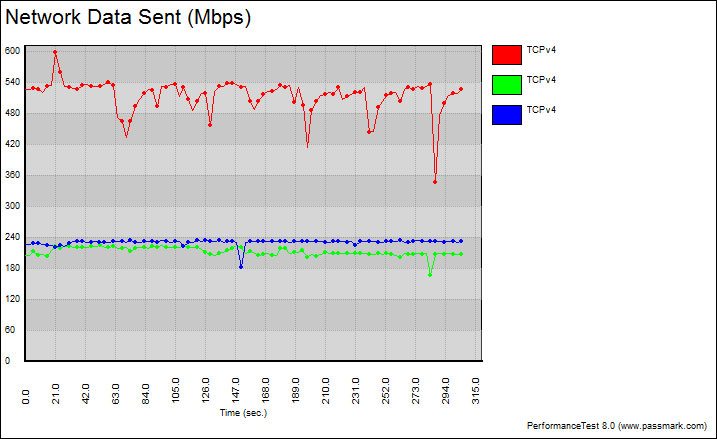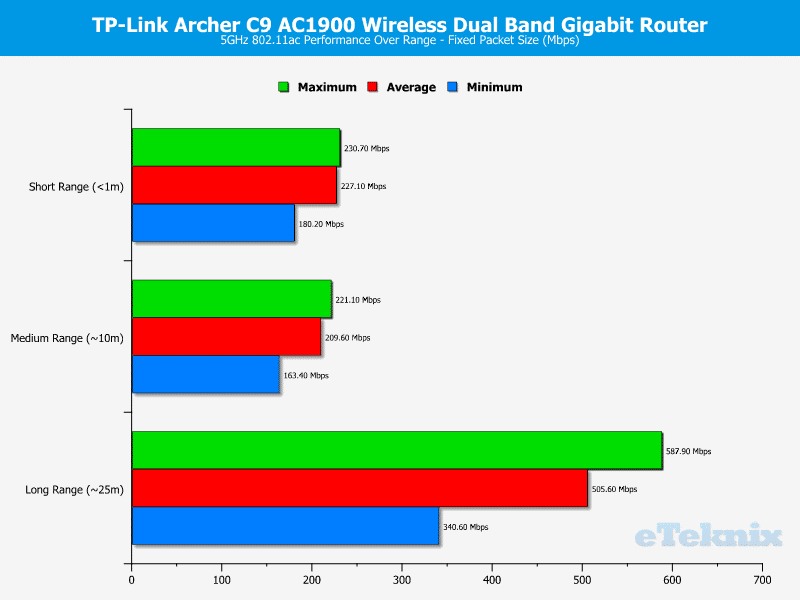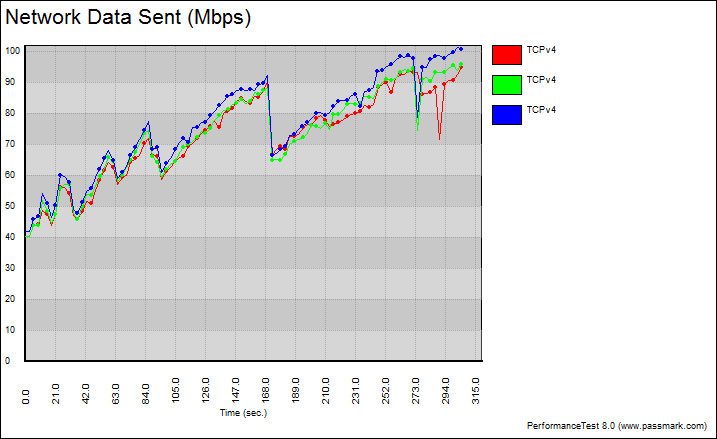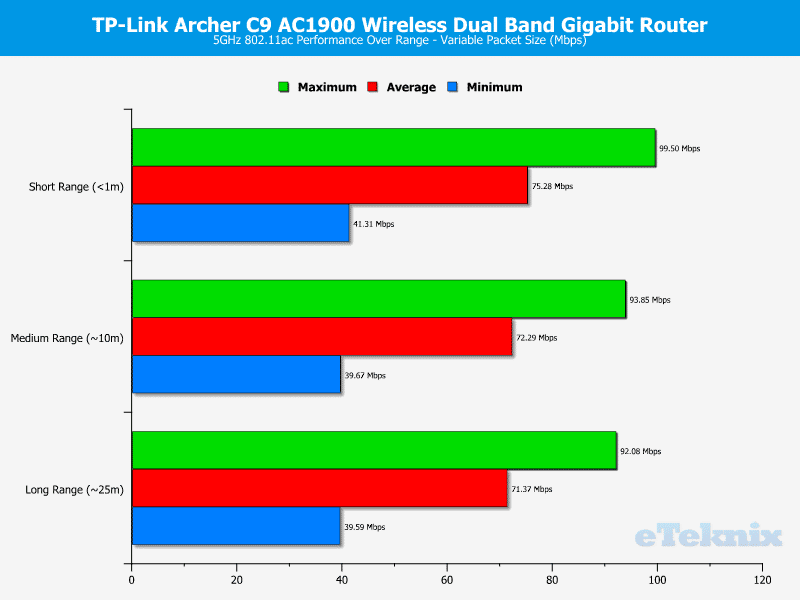TP-Link Archer C9 AC1900 Gigabit Router Review
Bohs Hansen / 9 years ago
WLAN 5GHz 802.11ac Performance
5GHz is a more recent addition to the consumer WiFi specification and on this frequency we find both 802.11n and AC standards on offer. We note that 802.11n is the only standard to run at both 2.4GHz and 5GHz frequencies and this is the most common standard for ISP routers to feature. Unlike the 2.4GHz band, 5GHz radio waves and solid brick walls do not go that well hand in hand, so whilst it does support a much faster throughput speed, its range can be severely crippled in a dense operating environment.
Fixed Block Size
To test the maximum throughput speed that a wireless connection can handle, a fixed block size of 16384 Bytes is sent from the client to the server over a period of five minutes. The higher block size will allow the transfer rate to stay as high as possible – in the same way that large files transfer from one drive to another quicker than lots of small files of the same total size.


Variable Packet Size
In a real world situation, the blocks of data that pass through a wireless adaptor are not of the same size each time, so to give a more realistic impression of how an adaptor performs, the adaptor is once again tested at each range for a period of five minutes. This time however, the block size will vary from 32 Bytes up to 16384 Bytes in increasing steps of 148.7 Bytes each time.


I don’t fully get why the fixed packet test performed so much worse on the short and middle distances, but I suspect interference from neighboring networks. The router however really displayed what it’s capable off on the longest range of about 25 meters. This router will penetrate your apartment into the furthest corner.



















